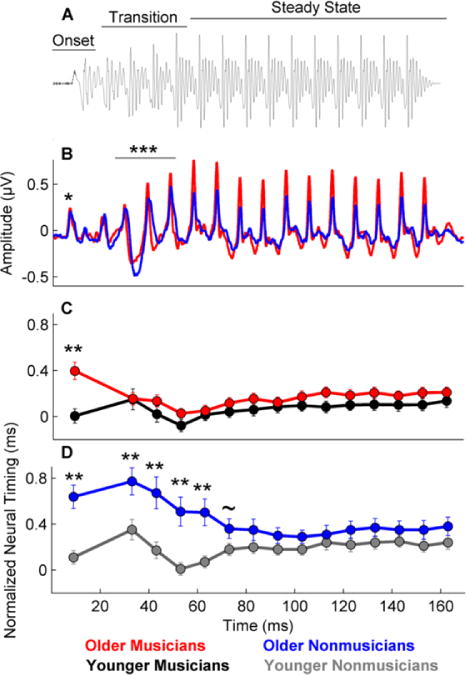Figure 2.

Older musicians have earlier brainstem timing than older nonmusicians. A. The stimulus waveform for the speech syllable [da] with 3 time regions marked: onset, transition (20–60 ms) and steady state (160–170 ms). B. Brainstem waveforms in response to the speech syllable [da] presented in quiet. Older musicians (red) have earlier responses and greater amplitudes than older nonmusicians (blue). C. No age-related latency delays are noted in older musicians (red) compared to younger musicians (black), except for the onset. D. Compared to younger nonmusicians, older nonmusicians (blue) have significantly delayed brainstem latencies for the onset and transition, but not for the steady-state region of the response. Adapted from Parbery-Clark et al., Neurobiology of Aging, 2012 and Parbery-Clark et al., 2012b. ~p < 0.10, **p < 0.01. Error bars equal 1 S.E.
